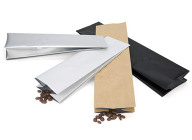- Afrikaans
- Albanian
- Amharic
- Arabic
- Armenian
- Azerbaijani
- Basque
- Belarusian
- Bengali
- Bosnian
- Bulgarian
- Catalan
- Cebuano
- chinese_simplified
- chinese_traditional
- Corsican
- Croatian
- Czech
- Danish
- Dutch
- English
- Esperanto
- Estonian
- Finnish
- French
- Frisian
- Galician
- Georgian
- German
- Greek
- Gujarati
- haitian_creole
- hausa
- hawaiian
- Hebrew
- Hindi
- Miao
- Hungarian
- Icelandic
- igbo
- Indonesian
- irish
- Italian
- Japanese
- Javanese
- Kannada
- kazakh
- Khmer
- Rwandese
- Korean
- Kurdish
- Kyrgyz
- Lao
- Latin
- Latvian
- Lithuanian
- Luxembourgish
- Macedonian
- Malgashi
- Malay
- Malayalam
- Maltese
- Maori
- Marathi
- Mongolian
- Myanmar
- Nepali
- Norwegian
- Norwegian
- Occitan
- Pashto
- Persian
- Polish
- Portuguese
- Punjabi
- Romanian
- Russian
- Samoan
- scottish-gaelic
- Serbian
- Sesotho
- Shona
- Sindhi
- Sinhala
- Slovak
- Slovenian
- Somali
- Spanish
- Sundanese
- Swahili
- Swedish
- Tagalog
- Tajik
- Tamil
- Tatar
- Telugu
- Thai
- Turkish
- Turkmen
- Ukrainian
- Urdu
- Uighur
- Uzbek
- Vietnamese
- Welsh
- Bantu
- Yiddish
- Yoruba
- Zulu
mm conversion chart
Understanding the MM to Inches Conversion Chart
When working with measurements, particularly in fields like engineering, woodworking, and design, it is essential to understand how to convert between different units. One common conversion that professionals often deal with is between millimeters (mm) and inches. The relationship between these two units can be critical for ensuring accurate designs, specifications, and measurements. This article will provide an overview of how to use an MM to inches conversion chart and why it’s important.
The Basics of the Conversion
Millimeters and inches are both units of length but are used in different measurement systems. Millimeters are part of the metric system, which is widely used around the world, particularly in scientific and engineering contexts. Inches, on the other hand, are part of the imperial system, predominantly used in the United States and a few other countries.
To convert millimeters to inches, you can use the following simple formula
\[ \text{Inches} = \frac{\text{Millimeters}}{25.4} \]
This means that one inch is equal to 25.4 millimeters. Hence, if you have a measurement in millimeters, you can quickly convert it to inches by dividing by 25.4.
Using the MM to Inches Conversion Chart
An MM to inches conversion chart can be an incredibly useful tool. These charts list common millimeter measurements alongside their corresponding inch values, making it easy to find the conversion without having to calculate it each time.
For example, here are some conversions that you might find on a chart
mm conversion chart

- 1 mm = 0.03937 inches - 10 mm = 0.3937 inches - 50 mm = 1.9685 inches - 100 mm = 3.937 inches - 200 mm = 7.874 inches
These values allow for quick reference, saving time and reducing the potential for errors during conversions.
Practical Applications
Understanding how to convert between these units and utilizing an MM to inches conversion chart has practical implications across various industries. In architecture and construction, for example, blueprints may use millimeters while some regions still reference measurements in inches. If an architect is working with builders who prefer inches, or vice versa, accurate conversions become essential.
Additionally, in the manufacturing sector, precision is vital. Mechanical parts may be designed in millimeters but need to be manufactured or inspected in inches. Engineers, machinists, and quality control inspectors often rely on these conversions for ensuring the compatibility and functionality of parts.
The Importance of Accuracy
Using a conversion chart helps mitigate the risks associated with translation errors. Even minuscule discrepancies in measurement can lead to significant issues in project outcomes, from ill-fitting components to safety hazards. That's why having a reliable conversion chart is not only convenient but essential for professionals to maintain accuracy.
Conclusion
In conclusion, the MM to inches conversion chart is an indispensable resource for anyone dealing with measurements across different systems. By understanding the relationship between millimeters and inches and utilizing a conversion chart, professionals can ensure accuracy in their work, maintain safety standards, and streamline their processes. Whether you are a designer, engineer, carpenter, or hobbyist, becoming familiar with this conversion will enhance your precision and effectiveness in your respective field. Make sure to keep a conversion chart handy for quick and efficient measuring, and you will undoubtedly find it beneficial in your projects.













